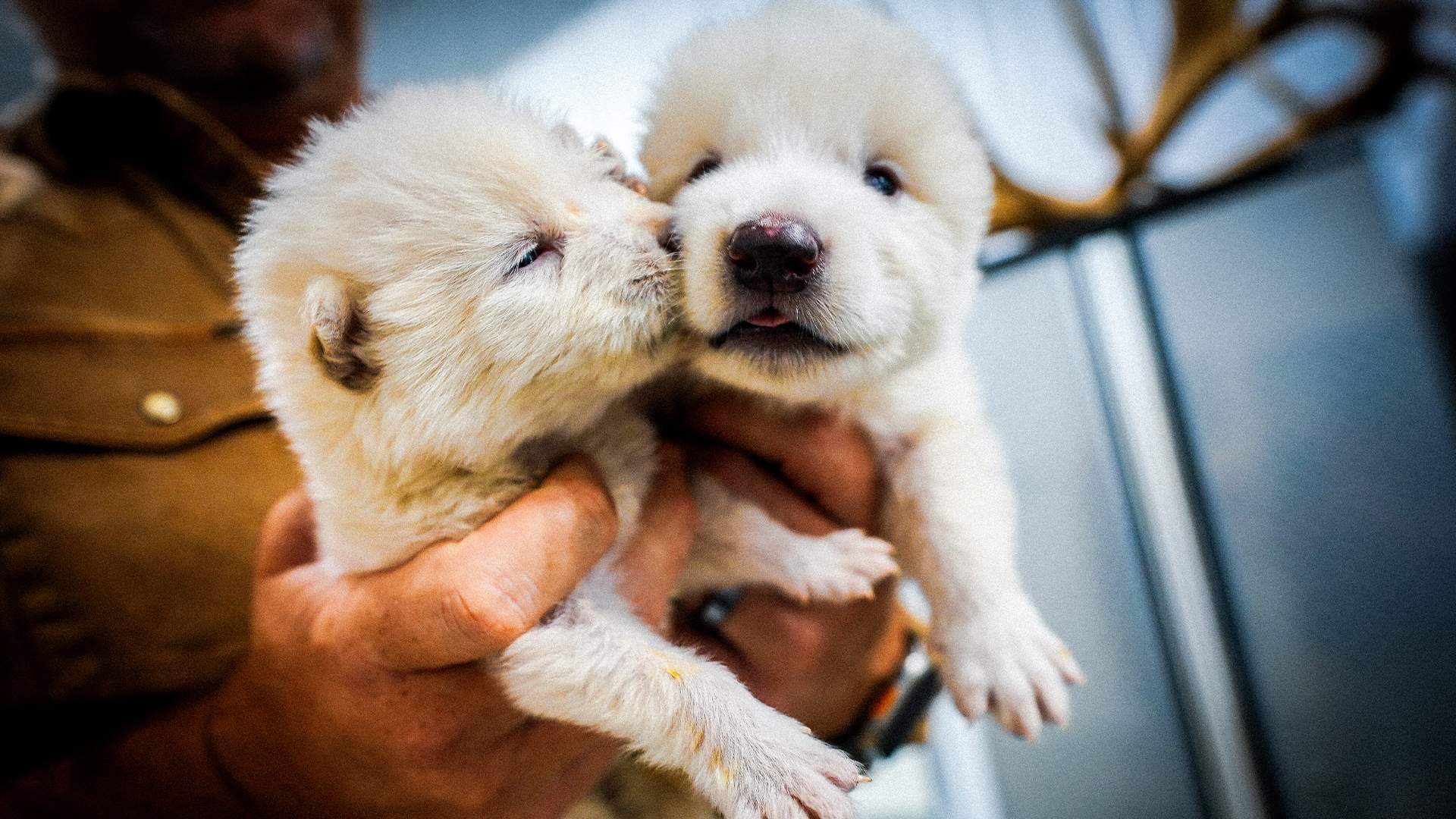- Статьи
- Society
- Direwolf Clone: Scientists have resurrected an extinct predator species from Game of Thrones
Direwolf Clone: Scientists have resurrected an extinct predator species from Game of Thrones

In April, American biotechnologists announced an important scientific achievement. Scientists have managed to recreate a species of terrible wolves that became extinct more than 12 thousand years ago, which gained fame thanks to the cult TV series "Game of Thrones". The "resurrection" of wolves became possible thanks to the extraction of DNA from other ancient animals, as well as complex genome editing. According to scientists, the dire wolves turned out to be much larger and stronger than their closest relatives, the gray wolves. Learn more about what terrible wolves look like now and who else scientists plan to "resurrect" in the near future, Izvestia reports.
How scientists managed to recreate the direwolves from Game of Thrones
Colossal Biosciences, an American biotechnology company from Dallas, announced the successful completion of an experiment to recreate one of the animal species that became extinct more than 12 thousand years ago — the terrible wolf. They lived in North America during the Pleistocene epoch, until they became extinct at the end of the Ice Age due to climate change and hunting by primitive people for their prey.
After the release of the fantasy series "Game of Thrones", their popularity increased. In the film, the terrible animals are called "direwolves". The animals had bright eyes, powerful fangs, thick fur, and a terrifying roar. In the series, the roles of terrible wolves were played by northern Inuit dogs and ordinary wolves.
In 2025, biotechnologists from the United States managed to "resurrect" this species using the genes of other extinct animals. Scientists have extracted DNA from two ancient samples — a 13,000-year-old tooth and a 72,000-year-old skull, which were discovered by archaeologists in America.
"It was really difficult to get a set of genes, they (terrible wolves. — Ed.) did not live in a cold climate, so the DNA was not preserved so well," said Dr. Beth Shapiro, chief researcher at Colossal Biosciences.
In addition, to recreate the species, the scientists used gray wolf cells and performed 20 genome edits, focusing on the features of the dire wolf, including large size, heavy muscles and white coat color. The donor cells were placed in the eggs of domestic dogs, and large hounds served as surrogate mothers. As a result of these efforts, three healthy puppies were born. The born brothers were named Romulus and Remus in honor of the founders of Rome, who were suckled by a wolf, and the female Khaleesi in honor of the main character of Game of Thrones.
Despite the fact that puppies are not exact genetic copies of an extinct species, they possess physical and behavioral traits typical of dire wolves, including their larger size, broad head, and powerful jaws. Their mass is 20-25% greater than the mass of representatives of the closest surviving related species, the gray wolf, at the same age. Their diet includes beef, venison, horse meat, as well as special food. According to scientists, in adulthood, terrible wolves will weigh about 63.5 kg.
Now the little "direwolves" are kept in a protected nature reserve in the USA. Colossal Biosciences considers this successful experiment as an important step in the field of biodiversity conservation and restoration of lost species.
Who else are scientists planning to "resurrect"?
Colossal Biosciences is actively working on projects to restore species lost several thousand years ago. In addition to successfully recreating the terrible wolf, scientists also plan to "resurrect" other species.
For example, the company wants to revive the woolly mammoth by introducing mammoth genes responsible for adapting to cold into the genome of the Asian elephant. This will create a hybrid animal that can survive in the Arctic tundra, which will contribute to the restoration of ecosystems and the fight against climate change.
Colossal Biosciences also plans to recreate the Tasmanian tiger, or thylacine, a marsupial predator that became extinct in the 20th century. Scientists want to use the genetic material of thylacine to edit the genome of closely related modern species in order to recreate an animal as similar as possible to the original species.
In addition, biotechnologists are working on the "resurrection" of the dodo, an extinct species of flightless bird, and the northern white rhinoceros, a subspecies that is on the verge of extinction. It is planned to use cloning and genetic engineering methods to increase the population. According to scientists, these projects are aimed not only at recreating extinct species, but also at developing technologies for preserving biodiversity and restoring ecosystems.
Переведено сервисом «Яндекс Переводчик»
